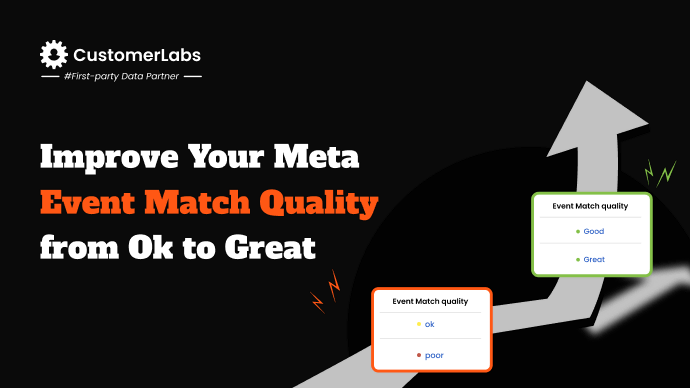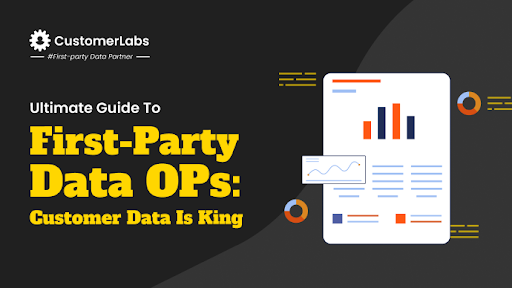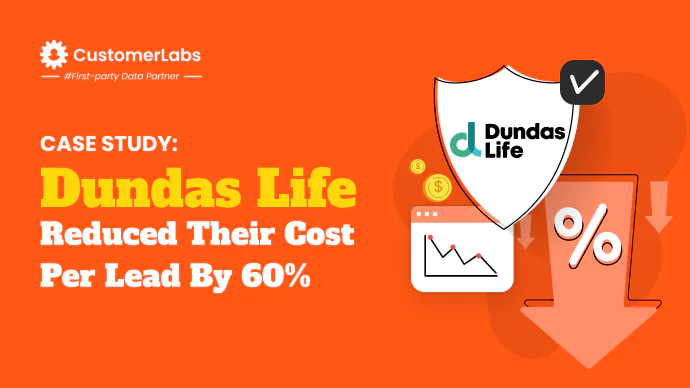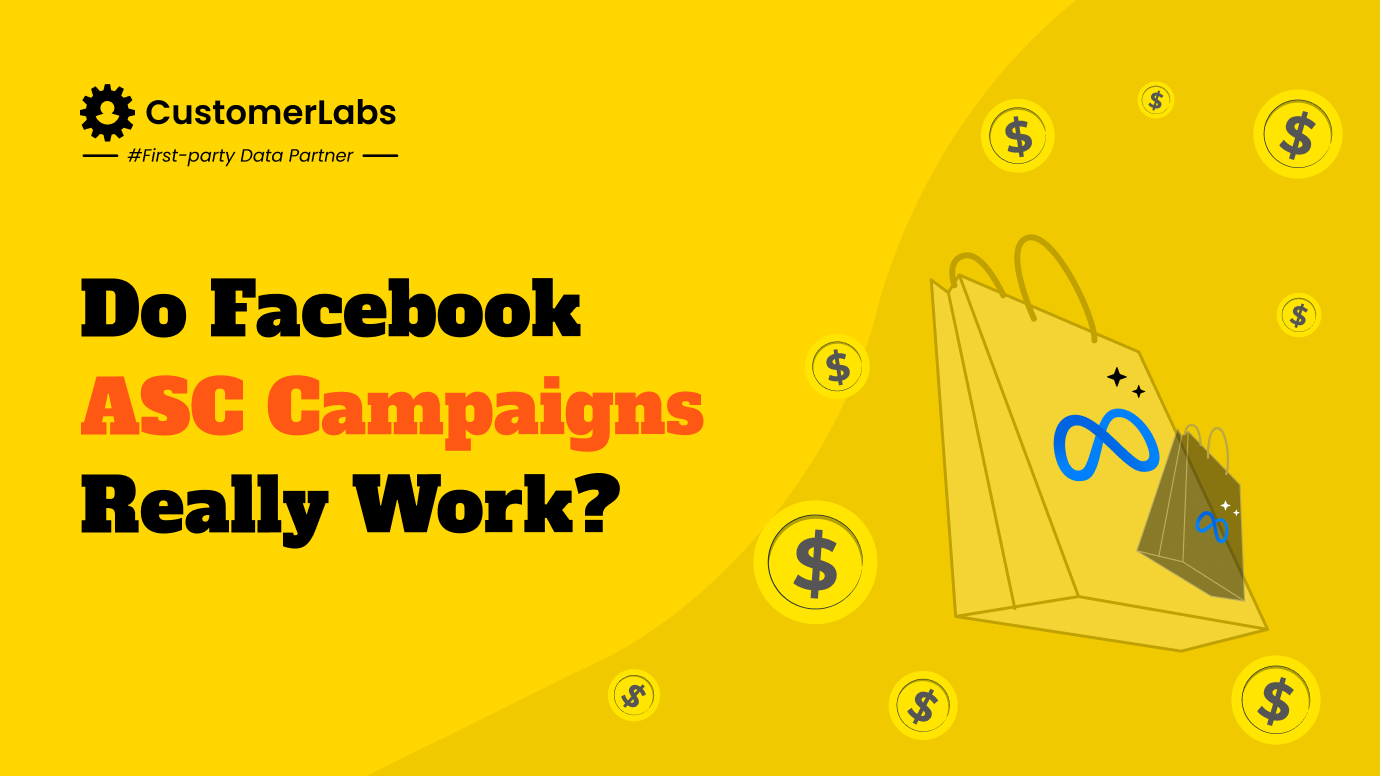
“Do Facebook ASC+ campaigns really work?”
This question is haunting marketers who are skeptical about using Meta’s Advantage+ Shopping Campaigns (ASC+). They feel that ASC snatched their control over ad campaign optimization.
Below is a screenshot of a marketer’s perception on the ASC campaigns.

There is also a perception that “ASC campaigns are mainly for retargeting”


You must understand how Meta’s algorithms work for ASC to know
- If ASC campaigns really work or not,
- If they are for retargeting alone, or even for prospecting
Let us begin with the basic question…
Why Did Meta Launch Advantage+ Shopping Campaigns?
“Necessity is the mother of invention,” said Plato.
There are several reasons why Meta launched ASC campaigns. I believe that below are the crucial reasons among others:
- To tackle the data privacy updates,
- To ease the campaign setup, and
- To reinforce marketers with the power of machine learning and automation,
The iOS14.5+ and the other data privacy updates made it difficult for Meta to collect and store audience data to use in the ad campaigns.
Audience targeting has always put marketers in a perplexed situation.
With the power of automation and machine learning, Meta’s algorithms can now find the right audience using the signals from first-party data sent through Conversions API.
The below image shows how Meta recommends activating the full funnel and specifically says to use Advantage+ custom audiences for retargeting campaigns.

With ASC, Meta tried to mitigate the loss caused by iOS14.5 and other data privacy updates and focussed more on training its algorithms with the right high-quality first-party data rather than relying on third-party cookie data.
Meta took away the burden of audience targeting from marketers’ shoulders.
Why Are Marketers Not Happy About Advantage+ Shopping Campaigns
If you look at the Advantage+ Shopping Campaign setup, it is very easy and there is not much work for the marketers to do. Ideally, marketers should love it. But they are not. Why?
Meta’s Advantage+ Shopping Campaigns raise concerns about marketers’ autonomy and decision-making capabilities.
Worse, it leaves marketers in the dark about optimizing their campaigns.

- Crucial targeting controls taken away from advertisers,
- Localized targeting is nearly impossible
- No location exclusion at the ad campaign level
- Specific audience targeting is not possible at the ad campaign level
- Analytics that provide a deeper understanding of which creative resonates with which audience is taken away,
- Reporting to understand which interest-based signals have resulted in conversions is no longer available.
- Narrow targeting is not possible. Always ‘go broad’ is the strategy with ASC+.
How To Make ASC+ Work For You
Rather than looking at Meta’s algorithms as enemies, you must focus on taming them. Have the reins of controlling and directing your Advantage+ Shopping Campaigns in your hands.
Importance Of Good Data
Fuel your advantage+ shopping campaign with high-quality first-party audience signals. The first-party data with all the audience signals will hint the ad algorithm in understanding which audience is valuable.
To collect and send high-quality first-party data, use CustomerLabs CDP. It helps you unify all your customer interactions, send the right audience signals to Meta, and drive the ad platform’s algorithms in the right direction.
Retargeting Or Prospecting
Most marketers think that when you feed the first-party data, Meta’s advantage+ shopping campaigns will work only for retargeting. However, that is not the case.
In the ad budget and scheduling settings,
- You can limit what percentage of the budget you want to use for prospecting, and
- You can limit how much budget you want to spend on retargeting.
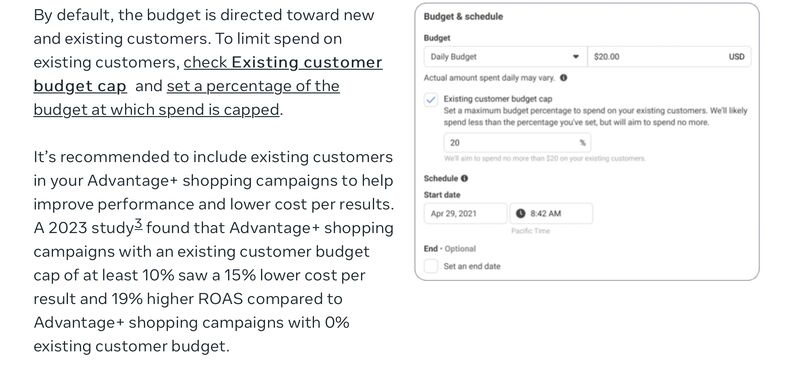
Read the blog to know what budget cap our client set to get 4X conversion rate.
Budget Split – 100 or Nothing
To retarget, use 100% as the existing customer budget cap. To prospect new customers, use 0% as the cap.
Our client used a 20% cap on the existing audience (first-party data). The results show a 4X increase in the conversion rate for existing customers.
Here, we have tricked Meta into assuming all the first-party audience as existing customers even when they did not make a purchase.
The high-intent first-party data is the middle-of-the-funnel audiences. These are the ones who
- Viewed the product page twice or thrice,
- Added the product to the cart but did not purchase in the last 45 days, 90 days, etc., and
- All website visitors in the last 365 days.
Compelling Ad Creatives Are Still Important
ASC campaigns are run by an advanced algorithm that finds the right audience based on your first-party data. The onus of creating compelling ad copies and ad creatives still lies with the marketers.
Even though the Advantage+ creatives help you with ad creatives, it is up to you to decide if that creative resonates with your audience and if your landing page is in sync with your ad creative.
Finally, The Results & Answer To The Elephant In The Room
Driving the ASC campaign algorithms with the right data did help marketers see success with the Advantage+ Shopping Campaigns.
If you did not see results with the ASC campaigns earlier, it means you are not doing it the ‘right way’.
To answer the question, “Do Facebook ASC campaigns really work?”, I have come up with two versions of the answer
No. ASC campaigns do not work if you do not give any data or high-quality first-party data to Meta Ads. No. They do not work if you use bad creatives and irrelevant landing pages.
Yes. ASC campaigns work if you send first-party data with all possible audience signals to Meta, and train the algorithm with your first-party data.
First-party data clubbed with best-recommended practices will optimize your campaign.
P.S. Do not forget the high-quality ad creatives and relevant landing pages.

